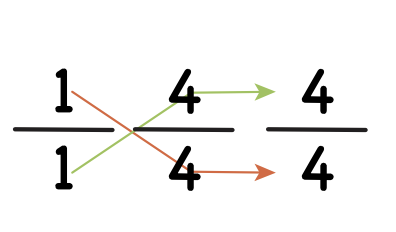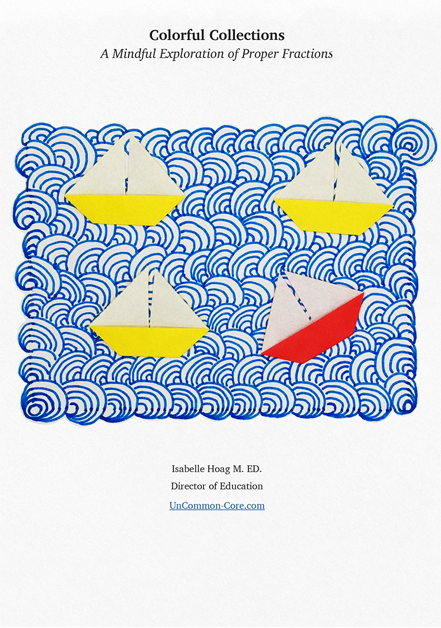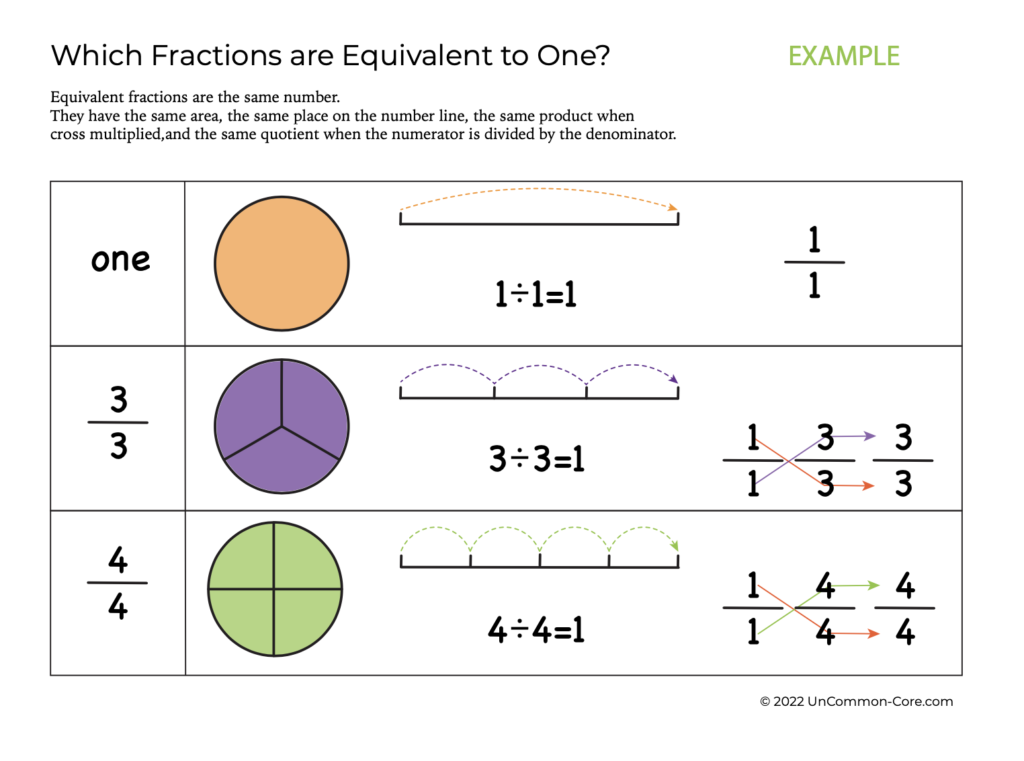
Search for metaphors and analogies to help students create a mental picture of one item as an amalgamation.
Imagine one word. A word could have one syllable, a word could have two syllables, three or more syllables, and it is still only one single word. Each of the following is only one word: Three, number, fractional, equivalent, and alphabetical.
You might encourage your students to think of one class as one entire item. If there are 25 students in the class, then 25 out of 25 would be equal to one whole class. They might consider a book as one item, in which case 12 out of 12 chapters (depending on the book) would make one entire book.
This step is crucial in order for your students to understand equivalent fractions. They have to believe that there are different fractional ways to represent one whole thing.
Any time you hesitate to ask a question because you might think the answer is so obvious, ask it any way.
Ask your students how they could tell, just by comparing the numerator and denominator, if a fraction is equal to one. Listen carefully. Then repeat the question the next day and see if any one else responds. You might even give them a skeptical look and ask if they are really sure. The more ‘thinking out loud’ and explaining your students do, the better.
Demonstrate the many ways in which one is the same as three-thirds, four-fourths, five-fifths, and so on.
Let your students make mini posters to show fractions equivalent to one. They should include many different models. Area models, number lines, and quotients are great ways to start.
Then encourage your students to find other ways to show the same information. Ask them to use examples.
Challenge them to explore the limits of fractions that equal one. Ask, what if the numerator is 17 million?!? They should all respond that the denominator would have to be 17 million also. Then ask, what if the numerator is zero? They should all respond that there isn’t a fraction that is equal to one that has a numerator of zero because there could never be enough zeros in the denominator to equal one.
Without this key understanding, students will have a hard time making sense of equivalent fractions.
Share This Story, Choose Your Platform!
Download Colorful Collections:
A Mindful Exploration of Proper Fractions
Help your students make sense of fractions.
I started teaching in 1987, which means I’ve collected many tips and tricks along the way. In this ebook, I share concepts, strategies, and classroom materials to help you make math sticky.
Along with this useful ebook, you will receive weekly emails from StickyMath@UnCommon-Core.com. I send information like: teacher tips, educational ideas, book reviews, curated lists, reviews of educational sites, and free first drafts of products that I’m creating for my TPT store. That way, you get helpful ideas and free stuff, while I get some feedback before I finalize products and put them up for sale.
I value your privacy. I will never sell your information. You may unsubscribe at any time.
All the best!
Isabelle
Isabelle Hoag M. Ed.


